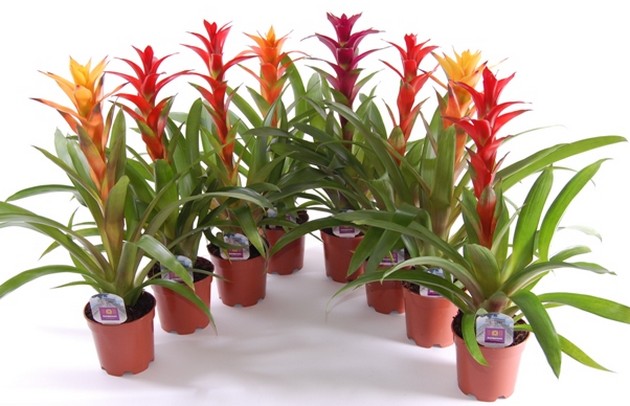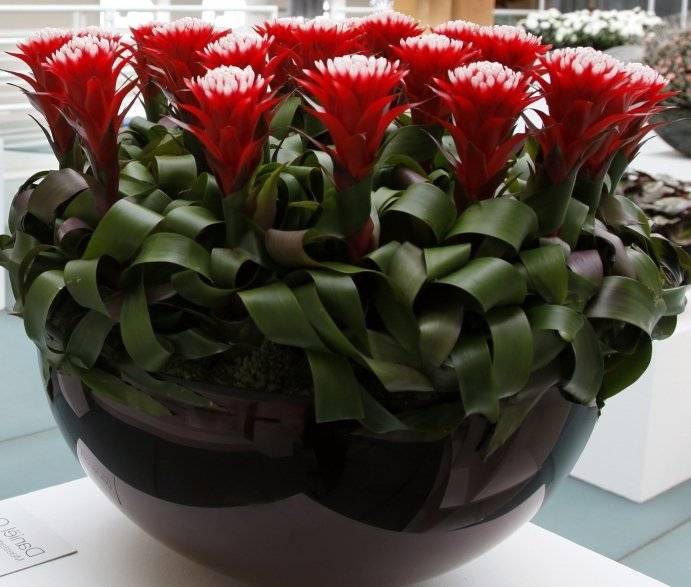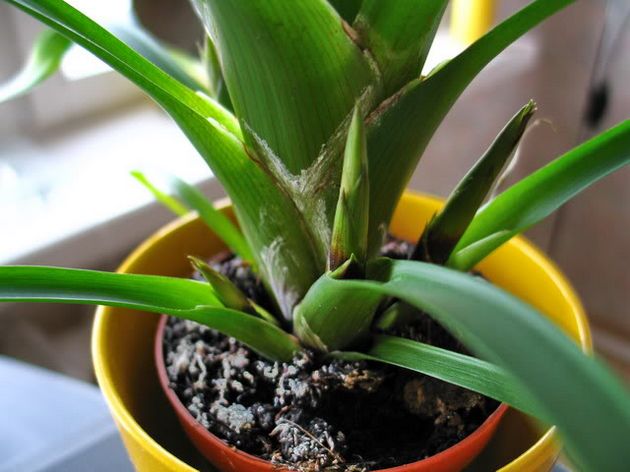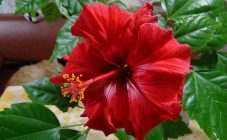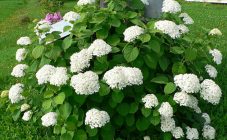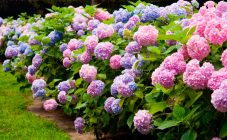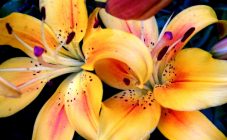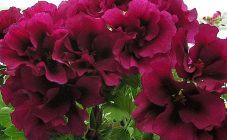Content:
Guzmania is a herbaceous bush of the Bromeliad family, named after the botanist from Spain Anastasio Guzman. The plant looks spectacular due to the bracts of various colors. Guzmania is easy to grow, knowing its planting and care requirements.
Growing
The leaf plates of the guzmania are formed in the form of a rosette, from the middle of which flower stalks of various lengths grow. The flowers are small and have no decorative value. All the beauty of the flower lies in varnished bracts of various colors. The plant, when properly maintained, looks very decorative for a long time.
Guzmania: transfer
Guzmania purchased in a flower shop is in a special shipping soil in which it will be difficult for it to develop. Therefore, about 2 weeks after purchase, the plant must be transplanted.
- A shallow pot is chosen, slightly larger than the shipping one. In guzmania, the root system is superficial, it grows slowly, so it will take up too large a container for a long time without developing. A small layer of drainage is laid at the bottom of the pot;
- Next, a little prepared substrate is poured, consisting of sod and leafy soil, humus, peat, sand. You can buy ready-made soil for bromeliads in the store;
- A plant is taken out of the old pot, the roots are shaken off a little from the transport soil, then it is planted and filled up with a substrate.
When transplanting, you cannot tamp the root system with your hands, since it is very delicate - it can be damaged from pressing. You can tap the pot lightly.
Lighting
Under natural conditions, guzmania grows in partial shade, therefore, in home maintenance, it will better develop on window sills of eastern or western orientation. It must be shaded from the bright rays of the sun. Having received a burn, the plant quickly loses its decorative appearance, begins to hurt, and may even disappear altogether.
Temperature
In summer, the optimum air temperature should be from +22 to + 25 ° С, in winter it is permissible to reduce it to + 17-20 ° С. Lower parameters can be detrimental to the plant. Especially in conjunction with drafts, which are contraindicated for a tropical guest.
Watering
Although the guzmania is a lover of moisture, it can die from excess water. Proper watering is done as follows:
- Water is poured into a deciduous outlet, and should be there constantly (in the warm season). Once a month, the liquid is poured out, the outlet is filled with fresh, settled water;
- The substrate is moistened only during the heat. The plant is watered not from above, but through the pan, with a small amount of water;
- Guzmania must be sprayed with water from a spray bottle every day. Periodically, you can arrange for her to stifle;
- To create more humid air, the plant is placed in a pan with moistened expanded clay, and a container filled with water is also placed near it.
Guzmania: reproduction
After flowering, the guzmania gradually dies: this is how its life cycle is built. Although the old bush cannot be reanimated, young plants can be propagated, which will bloom beautifully in 2-3 years, having adopted the maternal characteristics.
Seed propagation
This method is not very common among flower growers; it is more used by breeders to develop new varieties of plants. To propagate guzmania by seeds, perform the following actions:
- the seeds are soaked for 2-3 hours in a weak solution of potassium permanganate;
- seeds are spread into the prepared substrate, consisting of sand and peat, lightly pressed with the palm;
- the seedlings are moistened with water from a spray bottle, the container is covered with a film to create conditions favorable for the rapid germination of seeds;
- the pot is placed in a warm room.
After about 3 weeks, the first shoots of young guzmans will appear. When they are a little older, they are transplanted into separate small containers. The grown seedlings are transferred into pots, in which the plants will develop further and then bloom.
Reproduction by lateral processes
By dying, the plant gives life to its offspring. Young plants begin to multiply from the rhizome, which in 2-3 years, under favorable conditions, will begin to bloom. They need to be transplanted from the mother plant after they grow up a little and get stronger. The breeding process by children step by step:
- an earthen lump with young plants is removed from the pot;
- with a sharp knife, the children are separated in such a way that each of them must have its own root system;
- guzmania are planted in separate small pots, ⅓ filled with drainage, and then with a substrate for bromeliads;
- young bushes are sprayed with water from a spray bottle.
After planting, the plants can be covered with glass or plastic. They need warmth and moisture to root. After 1-2 weeks, it is already possible to water into the outlet. In the third year after planting, the bushes will begin to bloom.
Guzmania: leaving
Care consists of watering, humidifying the air around the plant, as well as spraying and wiping the leaves. During the period of active growth (from May to September), the bush is fed with fertilizers for orchid or bromeliad plants, according to the instructions. To maintain the elasticity of the leaves, the guzmania is fed with potassium fertilizers once every 3 months.
Closer to autumn, the flower begins to dry out. He ceases to need abundant watering, top dressing. Care during this period consists in the gradual removal of the peduncle, then the withering leaves. Small watering is done through the pallet, the drying outlet is not moistened.
Growing difficulties
With improper care, guzmania can lose its decorative appearance. Some problems that arise when growing a plant:
- Guzmania is not growing. This can happen with a lack of light, depletion of the substrate. To solve the problem, the bush is rearranged to a more illuminated place, fertilizers are applied;
- The plant does not bloom. Possible reasons: too dry air, too little or too much light.The green space must be provided with moist air by spraying it, placing it in a tray filled with expanded clay and water (moisture should not reach the bottom of the pot), adjust the light flow;
- The leaves dry up, the bush is covered with light brown large dots. This means that the shield has started up. To get rid of them, the leaves are wiped with a rag dipped in soapy water;
- A cobweb appears on the guzmania. It was her spider mite who chose her. To make it disappear, the plant is washed under the shower, if necessary, treated with an insecticidal preparation. In addition, you will need to increase the humidification of the air around the bush, as well as regularly ventilate the room;
- Decay of roots. This usually occurs from excessive moisture in the substrate. To solve the problem, the bush is taken out of the pot, the rotten fragments are cut off to healthy parts, sprinkled with charcoal or activated charcoal, and planted in dry soil.
Popular varieties
Breeders have bred many varieties of this plant, but only a few of them are grown at home. The most popular are:
- mosaic guzmania;
- guzmania reed;
- Guzmania Minor;
- guzmania Zana;
- Nicaraguan Guzmania.
Guzmania mix is not a separate variety. This is the name of the bushes planted in a wide, shallow bowl with a varied color of bracts. It is possible to place on the windowsill both only guzmania and other bromeliads related to them: neoregelia, bilbergia, pineapple. It will be easy for them to grow up together, since they need the same conditions.
Caring for exotic guzmania is slightly different from caring for other plants. But, armed with the knowledge of how to propagate and care for guzmania, a florist will be able to grow not even one bush on his windowsill, but several generations of a spectacular indoor plant.
